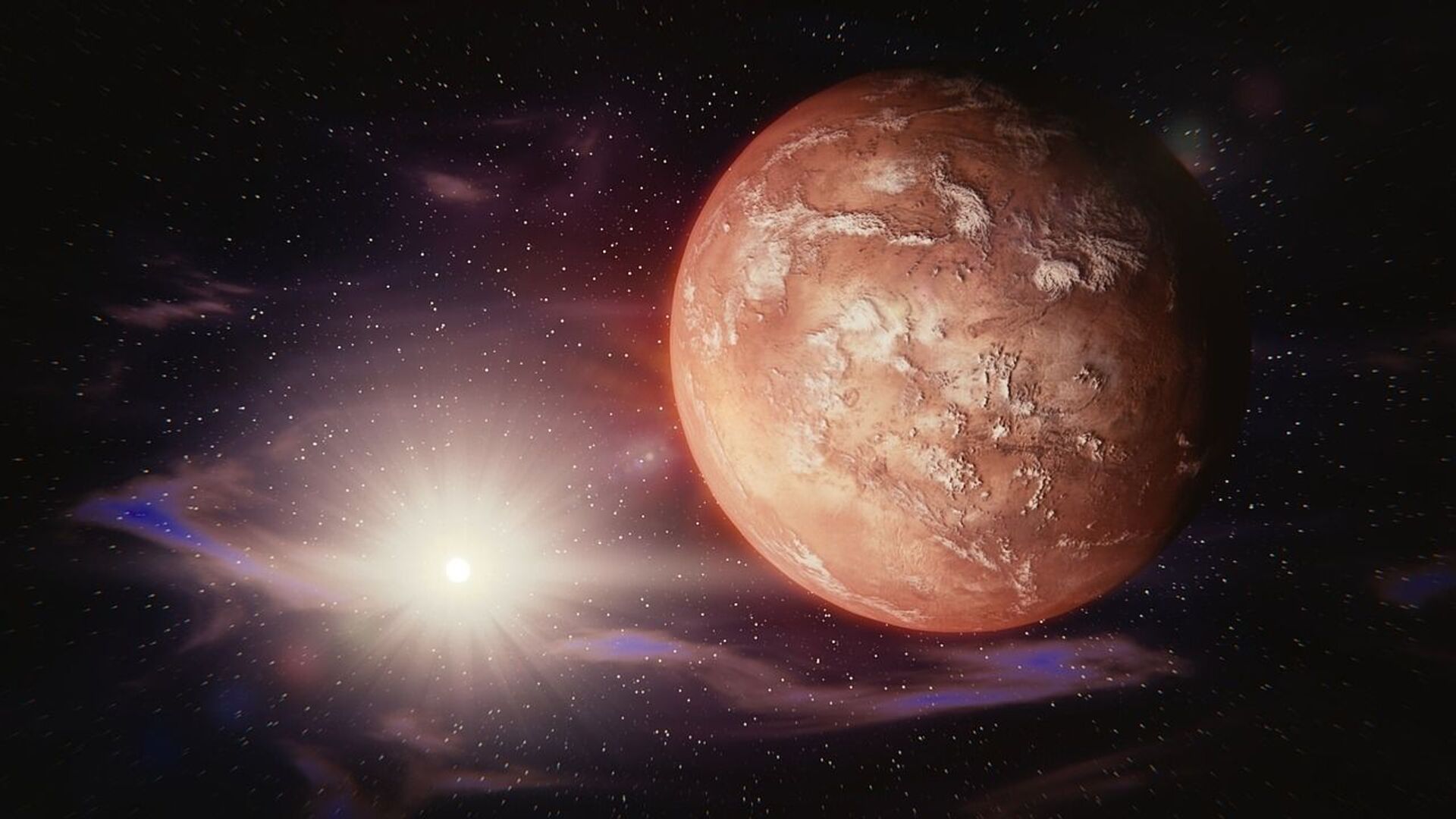https://sputnikglobe.com/20220103/terraforming-mars-venus-not-out-of-the-question---retiring-nasa-chief-scientist-1092002275.html
Terraforming Mars, Venus Not Out of the Question - Retiring NASA Chief Scientist
Terraforming Mars, Venus Not Out of the Question - Retiring NASA Chief Scientist
Sputnik International
While the scientist’s proposal for Mars involves a magnetic shield that would help stop the planet’s atmosphere being stripped by the solar wind, his... 03.01.2022, Sputnik International
2022-01-03T21:43+0000
2022-01-03T21:43+0000
2022-11-30T10:10+0000
nasa
science & tech
venus
terraforming
mars
https://cdn1.img.sputnikglobe.com/img/107809/36/1078093625_0:0:1280:720_1920x0_80_0_0_d3eb77d65978ee5e45033eec6c428f0c.jpg
While manned outposts on other planets still remain the premise of bold science fiction, NASA’s retiring chief scientist, James Green, suggested that making Mars habitable may be deceptively straightforward.In 2017, Greene brought up the prospects of terraforming Mars at the NASA Planetary Science Vision 2050 Workshop, arguing that a “magnetic shield” could protect the Red Planet from high-energy solar particles and prevent the solar wind from stripping the Martian atmosphere, a move that would improve the climate.In a recent interview with The New York Times, Green also observed that the task of terraforming Mars is “doable”.Greene noted that being able to walk on the planet’s surface without a spacesuit would afford humans “flexibility and mobility”, while increasing the atmospheric pressure and temperature would enable humankind to “begin the process of growing plants in the soils.”He acknowledged, however, out that the “first level of terraforming”, which he set at 60 millibars – “the Armstrong limit, where your blood doesn’t boil if you walked out on the surface” – is still “a factor of 10 from where we are now.”The retiring scientist also speculated that another planet in our solar system, Venus, could be terraformed as well, with the help of a “physical shield that reflects light”, which would lower the second planet's extremely high atmospheric temperature.
https://sputnikglobe.com/20211219/significant-amounts-of-water-found-hidden-on-mars-by-esa-roscosmos-mission-1091644758.html
mars
Sputnik International
feedback@sputniknews.com
+74956456601
MIA „Rossiya Segodnya“
2022
News
en_EN
Sputnik International
feedback@sputniknews.com
+74956456601
MIA „Rossiya Segodnya“
Sputnik International
feedback@sputniknews.com
+74956456601
MIA „Rossiya Segodnya“
nasa, science & tech, venus, terraforming, mars
nasa, science & tech, venus, terraforming, mars
Terraforming Mars, Venus Not Out of the Question - Retiring NASA Chief Scientist
21:43 GMT 03.01.2022 (Updated: 10:10 GMT 30.11.2022) While the scientist’s proposal for Mars involves a magnetic shield that would help stop the planet’s atmosphere being stripped by the solar wind, his suggestion regarding Venus involves a “physical shield that reflects light”, which would cool that world.
While manned outposts on other planets still remain the premise of bold science fiction, NASA’s retiring chief scientist, James Green, suggested that making Mars habitable may be deceptively straightforward.
In 2017, Greene brought up the prospects of terraforming Mars at the NASA Planetary Science Vision 2050 Workshop, arguing that a “magnetic shield” could protect the Red Planet from high-energy solar particles and prevent the solar wind from stripping the Martian atmosphere, a move that would improve the climate.
“The solar system is ours, let’s take it,” he said at the time. “And that, of course, includes Mars. But for humans to be able to explore Mars, together with us doing science, we need a better environment.”
In a recent interview with The New York Times, Green also observed that the task of terraforming Mars is “doable”.
“Stop the stripping, and the pressure is going to increase. Mars is going to start terraforming itself. That’s what we want: the planet to participate in this any way it can,” he said. “When the pressure goes up, the temperature goes up.”
Greene noted that being able to walk on the planet’s surface without a spacesuit would afford humans “flexibility and mobility”, while increasing the atmospheric pressure and temperature would enable humankind to “begin the process of growing plants in the soils.”

19 December 2021, 12:17 GMT
He acknowledged, however, out that the “first level of terraforming”, which he set at 60 millibars – “the Armstrong limit, where your blood doesn’t boil if you walked out on the surface” – is still “a factor of 10 from where we are now.”
The retiring scientist also speculated that another planet in our solar system, Venus, could be terraformed as well, with the help of a “physical shield that reflects light”, which would lower the second planet's extremely high atmospheric temperature.


